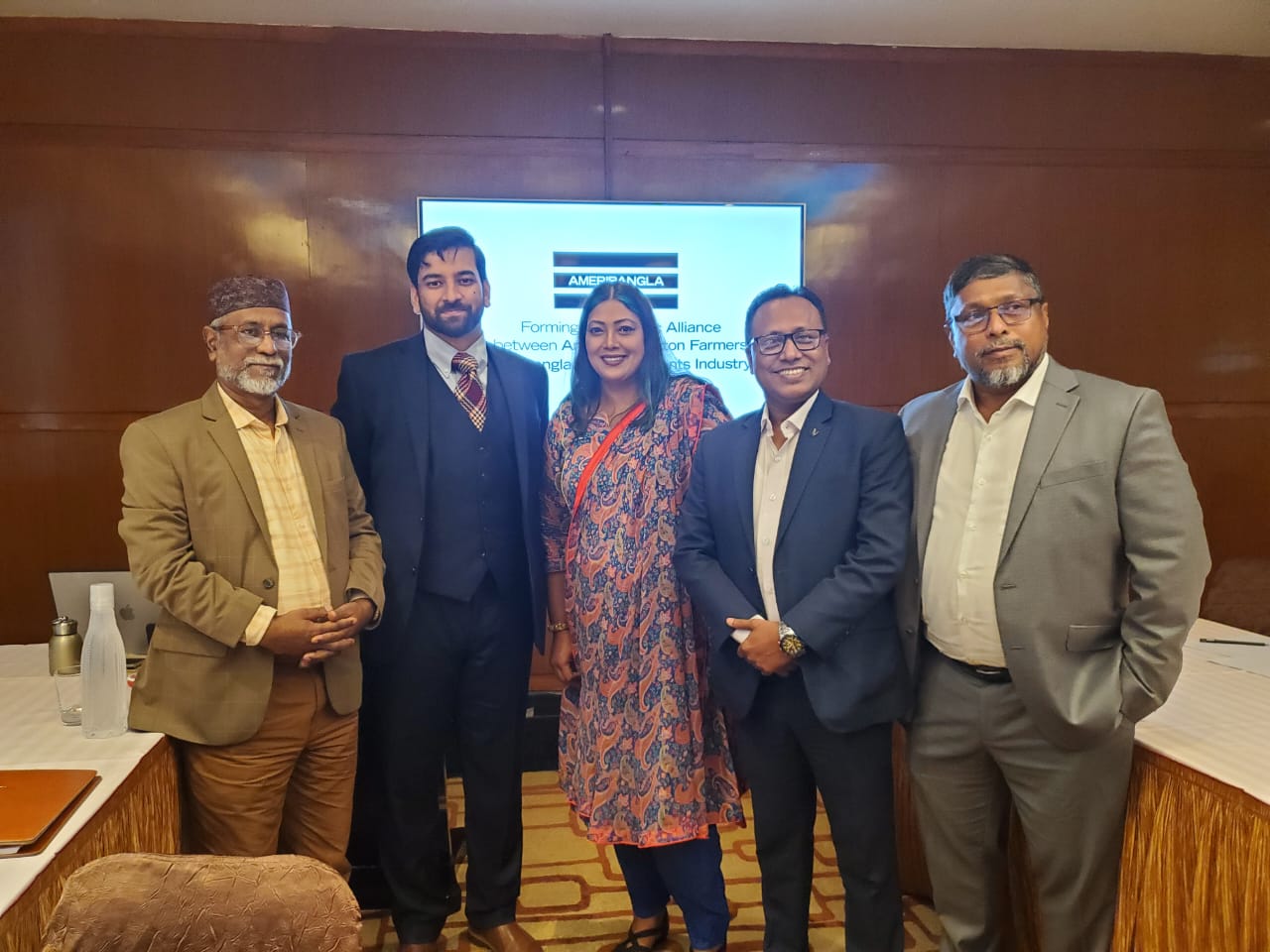As diplomatic winds shift and tariff talks between Dhaka and Washington tread water, a new thread of opportunity is being spun – not in cabinet rooms, but in cotton fields and factory floors.
On Thursday, a high-level strategic dialogue held at The Westin Dhaka saw an unlikely but powerful convergence. Representatives of US cotton farmers, weary of middlemen and shrinking market share, met face-to-face with Bangladesh’s readymade garment (RMG) leaders to craft a new fabric of trade.
Hosted by AmeriBangla Corporation, the summit sought to bypass bureaucracies and profit-driven intermediaries, offering instead a direct pipeline from American farms to Bangladeshi textile mills. The message was clear: “Let producers talk to producers.”
“Right now, US cotton is 5 to 6 cents per pound more expensive than African or Indian options,” said Aswar Rahman, CEO of AmeriBangla. “But if we eliminate the merchant class, if we streamline the order system and ensure bonded warehouses, we can not only match but undercut the current prices—with better quality.”
Rahman, a Bangladeshi-American entrepreneur and the architect of the proposed alliance, made a compelling case. He pointed out that while cheaper sources offer cotton with up to 10% waste, US cotton comes with less than 2% wastage and verifiable traceability—an edge in an era of rising compliance scrutiny from Western buyers.
“Every 1% waste leads to 1.5% production loss,” Rahman explained. “US cotton gives cleaner fibre, higher yield, and stronger compliance signals.”
But the proposal isn’t just about economics. It’s about leverage.
US cotton farmers – many of them politically influential landowners across 17 Southern states – are eager to reclaim their place in the global market. Their share of Bangladesh’s cotton import has slipped to just 6% in the first seven months of the last fiscal year. For them, Bangladesh – the world’s second-largest apparel exporter – is a lifeline worth fighting for.
And they are ready to fight.
“If Bangladesh commits to sourcing over half of its cotton directly from American farmers, those same farmers will take your case to Congress,” Rahman said. “Tariffs on Bangladeshi garments can become negotiable when our interests are tied together.”
Congress, after all, is where tariffs are ultimately decided. And with the Trump administration reportedly considering new conditionalities for market access, ensuring that garments sold in US stores are stitched from American cotton may soon become policy. In that context, this direct trade model may not be just beneficial – it may become essential.
AmeriBangla, sensing this policy shift, is preparing to launch a dedicated overseas showroom showcasing products made from US cotton, betting that US retailers will soon be incentivised to prioritise homegrown fibre.
The room on Thursday was full of decision-makers—top brass from Hamim Group, Jamuna Group, Saad Group, Divine Group, True Group, RPM Group, as well as logistics giants like Marubeni and Kuehne + Nagel. BKMEA and other industry bodies were also represented, signalling institutional interest.
Yet, despite the excitement, some urged caution.
“Long-term price guarantees must be part of this equation,” said a senior garment executive at the meeting. “We can’t risk a trap where prices shoot up after we commit fully.”
Rahman acknowledged the concern, but emphasised the moment: “Congressmen are returning to their home districts this August. That’s when they listen most closely to their voters. We must act now.”
The proposal would require Bangladesh to empower its embassy in Washington to facilitate deals, and for the commerce ministry to allow bonded warehouse permissions for American cotton imports. In return, the nation could gain not just cheaper, better-quality fibre—but also powerful allies on Capitol Hill.
“In chaos lies opportunity,” Rahman concluded.
In the looming shadow of trade realignments and tariff threats, US cotton growers and Bangladesh’s garment leaders may have just found common ground—not just in profit, but in politics, power, and a shared stake in each other’s future.


